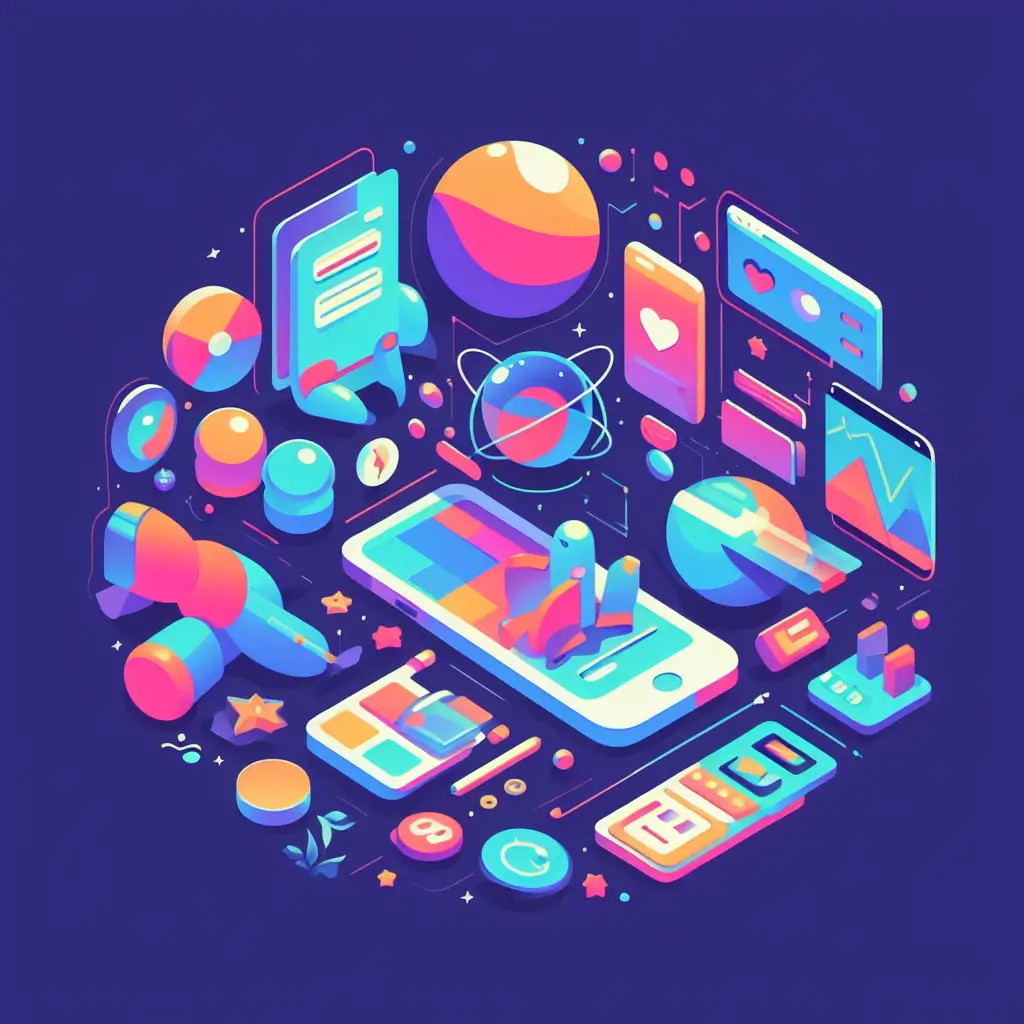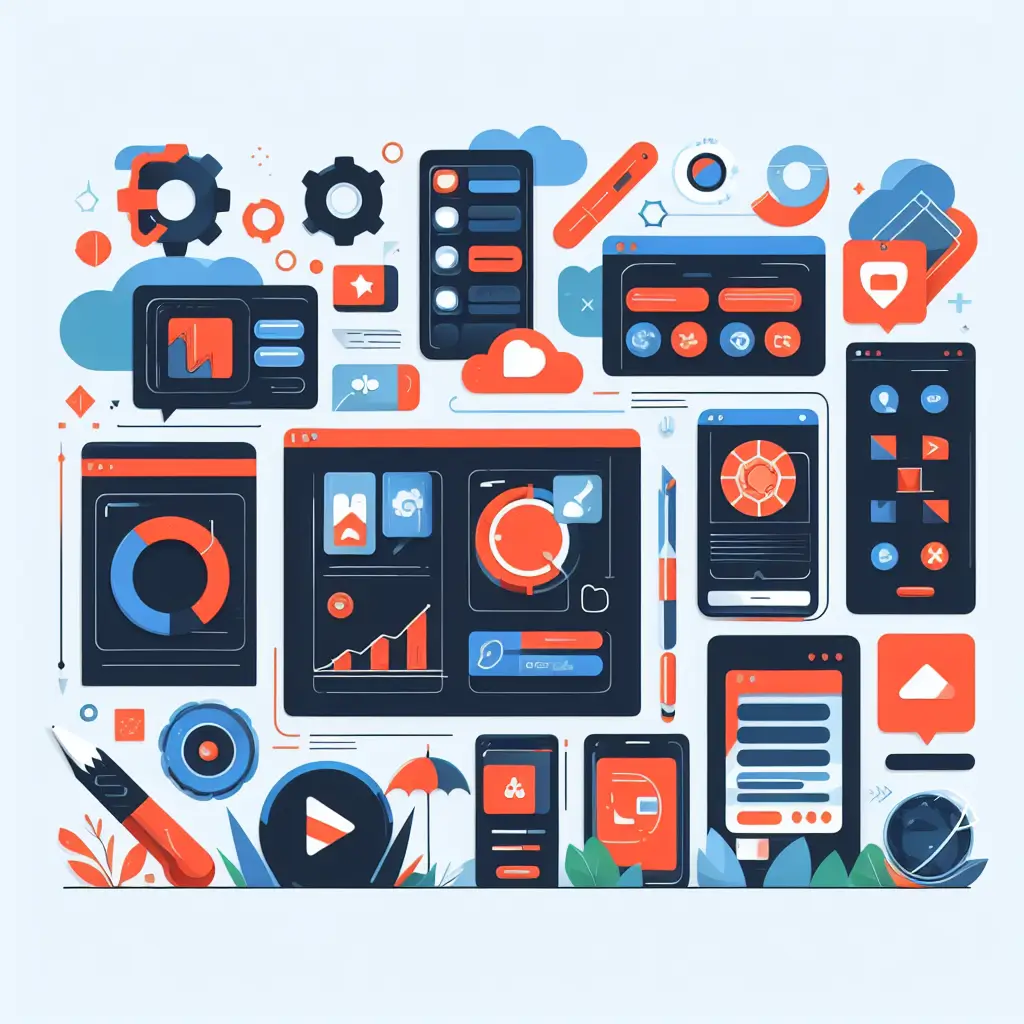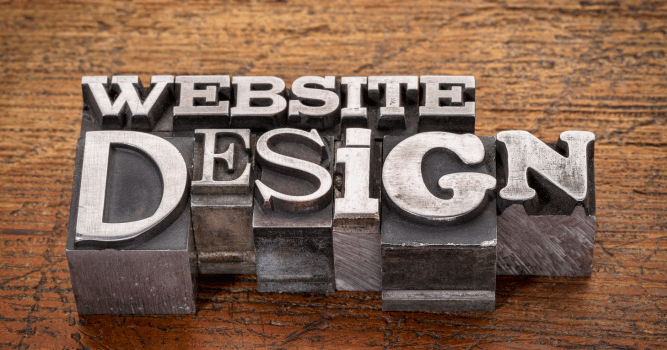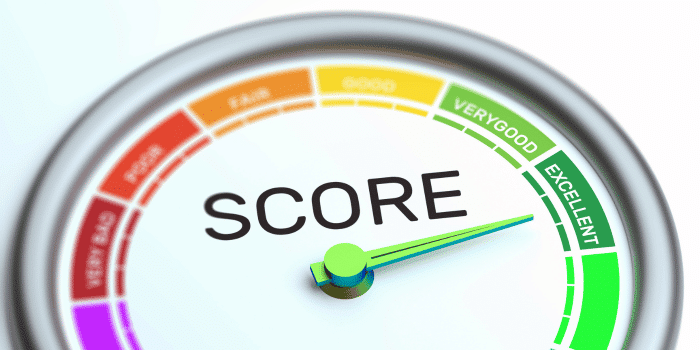Staying ahead is crucial. Our company understands the importance of a user-friendly interface and seamless experience in website design to meet the expectations of people in today’s technology-driven world. We offer a simple yet effective service to elevate your website, ensuring it captures attention and exceeds user expectations.
With our expertise in website design, we help your company create a platform that not only showcases your products and services but also represents your brand effectively. By incorporating the latest UI/UX trends, we ensure that your website becomes the home for visitors seeking information about your company or looking to engage with your offerings and meets user expectations. In this post, we’ll explore some examples and image sources to illustrate how website design trends can enhance user expectations and people’s digital presence.
Understanding UI/UX Trends

Evolving UI/UX Designs
In the dynamic world of UI/UX design trends, staying up-to-date on user expectations and needs is crucial for business and company success. One of the most significant recent trends in UI/UX website design is the rise of dark mode. Many popular apps, including Instagram and Twitter, now offer a dark mode option for users. This not only reduces eye strain but also conserves battery life on devices with OLED screens.
Moreover, micro-interactions in ui design trends are becoming increasingly prevalent, meeting user expectations. These subtle animations or visual responses to user actions enhance user engagement and overall experience on websites and mobile applications, incorporating ui ux design trends. For example, when a user “likes” a post on Facebook or double-taps an image on Instagram, they’re experiencing micro-interactions that make the platforms more interactive and enjoyable.
Voice user interface (VUI) has gained momentum as part of the latest UX trends. With smart speakers like Amazon Echo and Google Home becoming ubiquitous in many households, integrating VUI into website designs can provide users with hands-free interaction capabilities.
Furthermore, personalized user experiences and trends in contemporary UI designers’ strategies have become a focal point in UX. Tailoring content based on individual preferences and trends ensures that users feel valued by brands and creates a sense of loyalty among them.
Adapting to User Preferences
It’s essential to consider their impact on different demographics. For instance, while dark mode might be favored by younger audiences due to its sleek appearance and reduced strain on the eyes during nighttime browsing sessions, older users may still prefer traditional light themes for better readability and ui trends.
Similarly, micro-interactions should be used judiciously in UI/UX design trends as excessive animation can overwhelm some users or slow down older devices with limited processing power. When incorporating VUI into interfaces, providing alternative input methods such as touch or keyboard navigation ensures accessibility for all users regardless of their abilities.
Moreover, personalization should strike a balance between offering tailored experiences that meet user expectations without being intrusive or compromising privacy. Users appreciate relevant recommendations based on their past interactions and trends in UX and UI, but may feel uncomfortable if they perceive their data being exploited without consent.
Mobile-First Design
Importance
When designing a website, considering mobile-first design, ui, ux, and user expectations is crucial. With the increasing use of mobile devices, it’s essential to prioritize the user experience (ux) on smaller screens. This approach ensures that the website is optimized for various screen sizes, providing an excellent browsing experience across different devices.
Mobile-first design allows us to focus on creating a seamless and intuitive UX interface for users accessing our website from their smartphones or tablets. By prioritizing mobile responsiveness, we ensure that all elements of our website, including ui and ux, are easily accessible and visually appealing on smaller screens. This approach also encourages us to streamline content and features, leading to better overall usability and UI.
Benefits
One significant benefit of embracing mobile-first design is improved web performance and UI. By optimizing the site for mobile devices and UI first, we can create a faster-loading and more efficient website. This not only enhances user experience but also positively impacts search engine rankings.
Another advantage is increased engagement from users across different devices and improved UI. When our website’s UI offers a smooth and enjoyable experience on mobile, it encourages visitors to spend more time exploring our content and interacting with our brand. As a result, improved customer satisfaction can lead to higher conversion rates.
- Improved web performance
- Increased engagement
Elevate your website's performance—reach out to Kha Creation and revolutionize your UI/UX design now!
Dark Mode and Minimalistic Design
Dark Mode
We’ve noticed that dark mode has become a popular trend in website UI/UX design. Many websites now offer a dark theme option, which not only looks sleek but also reduces eye strain, especially in low-light environments. The use of darker backgrounds with lighter text and elements creates a visually appealing contrast.
Implementing dark mode can enhance the user experience by providing an alternative color scheme that is easier on the eyes. It’s particularly beneficial for users who spend extended periods browsing websites or working on their devices at night. With the increasing awareness of digital wellness, incorporating dark mode into website design has become more than just an aesthetic choice—it’s about prioritizing user comfort and accessibility.
Pros:
- Reduces eye strain
- Enhances visual appeal
- Offers an alternative color scheme for improved accessibility
Cons:
- May require additional design considerations to ensure readability across all elements
Minimalistic Design
Another prevalent trend we’ve observed is minimalistic design. This approach focuses on simplicity, using clean layouts, ample white space, and limited decorative elements. By embracing minimalism, websites achieve a modern and sophisticated look while ensuring that essential content remains the primary focus.
Minimalistic design emphasizes empty spaces, allowing content to breathe and making navigation more intuitive for users. It streamlines the user interface by removing clutter and distractions, resulting in a seamless browsing experience. Furthermore, this style often aligns with the principles of mobile-first design by prioritizing functionality over excessive ornamentation.
The strategic use of color is integral to minimalistic design as well—subtle palettes are favored to maintain harmony without overwhelming visitors with too much visual information.
Key Aspects:
- Clean layouts
- Ample white space
- Limited decorative elements
Incorporating these trends into website UI/UX can greatly impact how users engage with our online platforms. By staying attuned to evolving preferences in web design aesthetics such as dark mode and minimalism, we can ensure that our digital presence remains both visually captivating and user-friendly.
Personalization and Customization

Tailored Experiences
We are witnessing a significant shift towards tailored experiences. Users now expect websites to cater to their individual preferences. This means that user experiences are becoming more personalized based on factors such as browsing history, location, and past interactions with the site.
Personalized recommendations for products or content have become commonplace across various platforms. For instance, when shopping online, users often see suggestions for items similar to those they have previously viewed or purchased. This level of personalization enhances user engagement by providing them with relevant and appealing content.
In the realm of travel websites, users may receive customized recommendations for destinations based on their previous searches or geographical location. These tailored experiences not only meet user expectations but also create a sense of connection between the user and the website.
Interactive 3D Graphics
Another noteworthy aspect of modern website UI/UX trends is the integration of 3D graphics to enhance customization. Websites are increasingly incorporating interactive 3D elements that allow users to engage with content in a more immersive manner.
For example, some e-commerce sites now feature 3D product visualizations that enable customers to rotate and zoom in on items before making a purchase decision. This level of interactivity adds depth to the overall user experience and empowers individuals to explore products from every angle.
Moreover, in industries such as real estate or interior design, websites utilize 3D models to enable users to virtually tour properties or visualize room layouts. By integrating these advanced graphics into their interfaces, websites can offer an unparalleled level of customization that captures users’ attention while delivering valuable information.
Animations and Micro interactions in UI/UX
Enhancing User Engagement
Animations and microinteractions play a crucial role in enhancing the overall user experience of a website. When we talk about animations, we refer to dynamic elements such as loading spinners, hover effects, and scrolling transitions that bring life to the interface. These subtle movements not only capture users’ attention but also provide visual feedback, making interactions more intuitive. For instance, when navigating through a website with smooth scrolling effects or interactive buttons that change color when hovered over, users are more likely to stay engaged.
Microinteractions are small yet impactful design details that significantly contribute to user engagement. These can be seen in actions like liking a post on social media or receiving confirmation messages after submitting a form. By incorporating these micro-level interactions into the UI/UX design of websites, we create an immersive digital environment where users feel connected and valued. This fosters positive user experiences and encourages visitors to explore further.
Improving Usability and Functionality
In addition to boosting engagement, animations and microinteractions also serve the purpose of improving usability and functionality within websites. They guide users through different sections by providing visual cues for navigation or indicating changes within the interface. Consider how animated error messages can effectively communicate issues without overwhelming users with lengthy text explanations.
Moreover, microinteractions contribute to streamlining processes by simplifying complex tasks into smaller steps. An excellent example is seen in e-commerce websites where adding items to the shopping cart triggers a subtle animation accompanied by feedback confirming the action’s success—making online shopping more enjoyable for customers while ensuring they understand each step of their purchase journey.
Accessibility and Inclusivity
Designing for All
Ensuring accessibility and inclusivity is crucial. We aim to create a digital space that can be used by everyone, regardless of their abilities or disabilities. This means considering factors such as color contrast, font size, and navigational ease for those with visual impairments.
Creating an inclusive design involves making sure that individuals with varying degrees of ability can easily navigate through the website without barriers. For instance, using alt text for images allows screen readers to describe the content to visually impaired users. Incorporating keyboard navigation ensures that individuals who cannot use a mouse due to physical limitations can still interact with the website seamlessly.
Sustainable Design Practices
In addition to catering to diverse abilities, we also focus on implementing sustainable design practices in our UI/UX trends. Sustainability in web design refers to creating digital experiences that minimize environmental impact while maximizing user experience. This includes optimizing website performance for faster loading times, reducing unnecessary data usage, and employing energy-efficient design elements.
Ready to captivate your audience? Contact Kha Creation and unlock the potential of your website's UI/UX.
Immersive Experiences: AR/VR Integration
Augmented Reality
Immersive experiences are taking center stage in website UI/UX trends, and one of the most exciting developments is the integration of Augmented Reality (AR). AR enhances user engagement by overlaying digital information onto the real world. This technology allows users to interact with a website’s content in a more dynamic and immersive way. For example, furniture retailers can offer AR features that enable customers to visualize how a piece of furniture would look in their own homes before making a purchase.
AR provides an opportunity for websites to create interactive experiences that captivate users and keep them engaged. It offers endless possibilities for enhancing product demonstrations, providing virtual tours, or offering personalized experiences tailored to each user’s preferences. By integrating AR into their UI/UX design, websites can differentiate themselves from competitors and leave a lasting impression on visitors.
Virtual Reality
Another key aspect of immersive experiences is the integration of Virtual Reality (VR) into website UI/UX design. VR takes users on an entirely virtual journey, transporting them to different environments or scenarios without leaving their physical location. For instance, real estate websites can leverage VR to offer 360-degree virtual property tours, allowing potential buyers to explore properties as if they were physically present.
The incorporation of VR into website design opens up new avenues for storytelling and brand immersion. Users can be transported into branded worlds where they can engage with products or services in ways previously unimaginable through traditional interfaces. This not only elevates user experience but also creates memorable interactions that resonate long after the initial visit.
Incorporating both AR and VR elements into website UI/UX designs enables brands to deliver captivating experiences that drive meaningful connections with their audience while setting new industry standards.
Interactive and Engaging Micro interactions
Enhancing User Experience
When we talk about website UI/UX trends, one cannot overlook the impact of interactive and engaging micro interactions. These small, subtle animations or visual cues play a significant role in enhancing the overall user experience. From animated buttons to hover effects, these micro interactions make the website more dynamic and enjoyable for users.
Micro interactions are like the seasoning in a dish; they add flavor to the user interface, making it more engaging and intuitive. For instance, when hovering over a button on a website and seeing it change color or shape slightly, that’s an example of a micro interaction. These small details may seem insignificant individually but collectively contribute to creating an immersive digital experience.
These interactive elements can guide users through various actions such as filling out forms, navigating menus, or providing feedback. They not only make the website visually appealing but also communicate with users by acknowledging their input instantly.
Fostering Engagement
The beauty of micro interactions lies in their ability to foster engagement without overwhelming the user. When used thoughtfully, they provide instant feedback that reassures users about their actions on the website. This can lead to increased interaction rates as users feel more connected to the interface.
For example:
- A ‘like’ animation appearing when clicking on a heart icon.
- Visual feedback when dragging and dropping items.
- Animated progress bars indicating loading times.
Voice User Interface (VUI) Integration
Enhancing User Experience
Integrating Voice User Interface (VUI) can significantly enhance the overall user experience. By incorporating VUI, we allow users to interact with a website using their voice, making the interface more accessible and user-friendly. This trend caters to a wider audience, including those with disabilities or individuals who prefer hands-free interaction.
Utilizing VUI in website design opens up new possibilities for creating seamless and intuitive experiences. For example, implementing voice commands for navigation and search functions can streamline the user’s journey on the website. Users can simply speak their queries instead of typing, leading to quicker access to information and services. VUI integration offers a novel way for users to engage with content, providing an immersive experience that sets a website apart from its competitors.
Personalization and Efficiency
The incorporation of Voice User Interface also enables personalized interactions tailored to individual users’ preferences. Websites can utilize VUI technology to learn from user behavior and adapt their responses accordingly. For instance, based on previous interactions, a website equipped with VUI may anticipate a user’s needs and provide proactive suggestions or recommendations.
Moreover, by leveraging VUI capabilities such as natural language processing and understanding context, websites can efficiently address user inquiries without requiring extensive manual input. This not only saves time but also reduces friction in the user journey by eliminating complex navigational steps.
Future-proofing Design: AI and Machine Learning

Personalized Experiences
One of the most exciting developments is the integration of AI and machine learning. These technologies enable websites to provide personalized experiences for users. For example, based on a user’s past behavior, an e-commerce site can recommend products that align with their preferences. This level of personalization enhances user satisfaction and increases engagement.
The use of AI and machine learning in website design allows for dynamic content optimization. Through analyzing user interactions, these technologies can adapt and customize the content displayed on a website in real-time. For instance, if a visitor frequently clicks on articles related to technology, the website can prioritize displaying tech-related content when they visit next time.
Enhanced User Assistance
Another significant benefit of incorporating AI and machine learning into website UI/UX is the provision of enhanced user assistance. Chatbots powered by these technologies are capable of understanding natural language processing (NLP), enabling them to provide more accurate responses to user queries. This results in improved customer support experiences as users receive relevant information promptly.
Moreover, AI-driven chatbots can offer proactive assistance by predicting what users might need based on their browsing patterns or previous interactions with the website. For instance, if a visitor often searches for pricing information but hasn’t made a purchase yet, the chatbot can proactively offer assistance regarding pricing options or discounts.
Data-Driven Design Decisions
By leveraging AI and machine learning algorithms, designers gain access to valuable insights derived from extensive data analysis. These insights help in making informed decisions about various aspects of UI/UX design such as color schemes, layout structures, and placement of elements on web pages.
Furthermore, A/B testing facilitated by AI enables designers to compare different versions of web designs automatically based on user interaction data gathered over time. This iterative process leads to continuous improvement in design choices as it focuses on what resonates best with users.
Conclusion
We’ve delved into the dynamic realm of UI/UX trends, uncovering the pivotal role they play in shaping digital experiences. From mobile-first design to immersive AR/VR integration, each trend reflects the evolving landscape of user-centric design. Embracing dark mode, prioritizing accessibility, and integrating VUI showcase our commitment to inclusive and engaging interfaces. The future-proofing potential of AI and machine learning underscores our dedication to staying ahead of the curve. As we navigate this ever-changing terrain, let’s continue to champion innovation, inclusivity, and seamless user experiences in our design endeavors.
Transform user engagement today—partner with Kha Creation to create a UI/UX masterpiece for your website.







